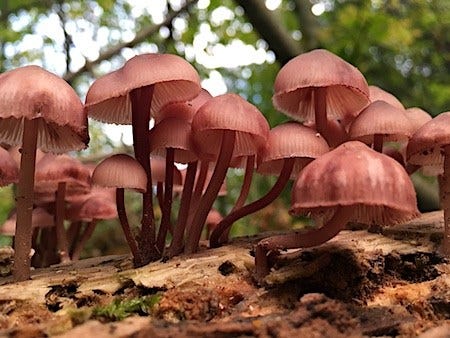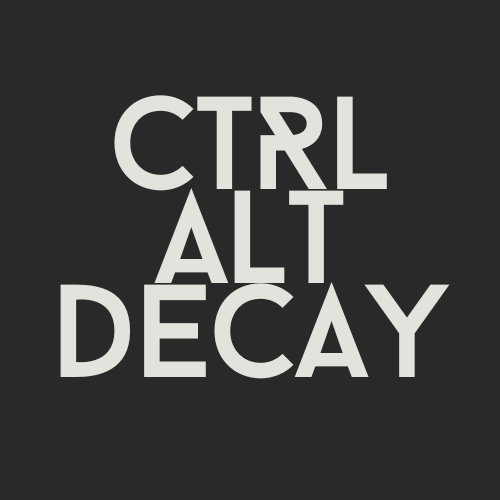On Death & Decay
Oh, and welcome to Ctrl + Alt + Decay! Here's my purpose & what you can expect.

Welcome to Ctrl + Alt + Decay! I’m new to Substack, and to blogging or writing in this format in general, so consider this a soft launch and we’ll see where it goes from here!
My name is Sean Thomas Milligan and I’m an adjunct instructor of English & Creative Writing at a university in Upstate New York, where I’m also a researcher in the field of literary criticism with a full-time role as an Academic Success Advisor.
I’m particularly interested in textual areas of pop culture including comic books, video and tabletop games, film, T.V., and more. My theoretical areas of study include disability studies, transhumanism and posthumanism, and ecocriticism. Lately, I’ve been fascinated with the concept of decay.
Why “decay”?
Generally, when one first thinks of decay, rot, or decomposition, they think of death. You might picture a body rotting in the ground, wriggling worms crawling all about, or a neglected home crumbling away. However, to me—and many biologists and philosophers—decay does not signify death—or rather, it would be more accurate to say that decay does not only signify death.
We all know that the processes of decay and decomposition play a vital role in a properly functioning ecosystem. The death of one thing allows for life elsewhere as the dead thing is recycled. This idea seems almost comforting—one feels a sort of connectedness with all things when death is approached from this vantage. As Donna Haraway puts it in Staying with the Trouble, “Critters—human and not—become-with each other, compose and decompose each other, in every scale and register of time and stuff in sympoietic tangling.”
Anna Tsing, in The Mushroom at the End of the World, makes even clearer the value of this mutual decomposition of all things as she discusses the role of fungi as decomposers. According to Tsing, fungi, by helping to decompose old and dead trees, become “world builders” as they contribute to the process of recycling death into new life.
Through this lens, decay symbolizes not merely death but also life and rebirth. This seeming contradiction is at the heart of much of what interests me as a pop cultural critic—I look for decay in all of its forms, whether literal or metaphorical. I scavenge the borderlands of culture, vigilant for the influence of decay as a contradictory, multifaceted and nourishing force.
What next?
This Substack is intended to be a sort of blog where I can lay out my thoughts about weird theory and pop cultural oddities and ephemera as they occur to me without necessarily going through the rigor of producing a formal, peer-reviewed paper. It might be fitting to think of this page as a compost heap. Perhaps not every idea will be golden, but as in nature, compost leads to renewal. Many of my pieces will focus on or at least gesture towards the concept of decay, but I’m likely to put out other random things as well.
Topics you’re likely to see here include but are not limited to:
Pop cultural studies
Comic books and graphic novels
Video games, board games, and tabletop roleplaying games
Film and T.V., especially science fiction and horror
Liminal spaces and liminality
Lost and dead media
Disability and illness studies
Ecocriticism
Transhumanism
Posthumanism
Anxiety (personal and cultural)
Pedagogy in higher education and best practices for academic advisement
Weird academia
Hauntology
I’m very interested in connecting with likeminded folk here, so please feel free to reach out! If any of this resonates, I hope you’ll subscribe, comment, or just lurk in the shadows. I’d love to subscribe to your work as well, especially if you too wander the strange, haunted, and decaying margins of pop culture.
Further Reading
Staying with the Trouble: Making Kin in the Chthulucene by Donna Haraway
The Mushroom at the End of the World: On the Possibility of Life in Capitalist Ruins by Anna Lowenhaupt Tsing




Welcome to substack. It's weird here in the best possible way. ^_^ I think I'm going to like your blog.